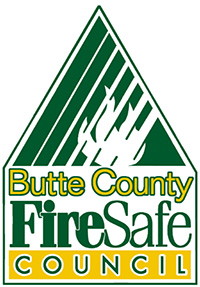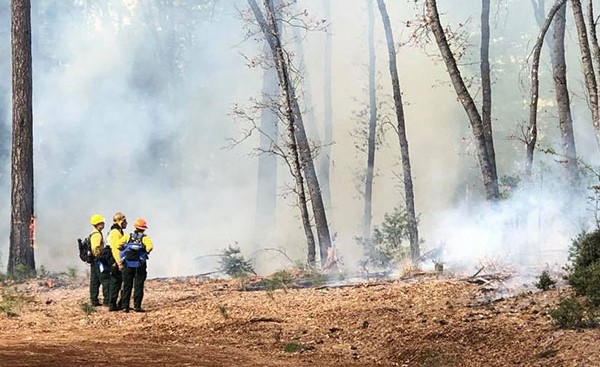“Good fire” is coming to help restore ecosystem health and reduce wildfire risk.
The BCFSC contracts professional prescribed fire crews to restore beneficial, low-intensity fire to Butte County’s landscapes. We view fire not as an enemy but as an essential partner, implementing landscape-scale prescribed burns that support native plant regeneration, ecological resilience, and community safety. This proactive approach transforms dangerous fuel loads into healthy, fire-adapted ecosystems—returning the good fire that these lands have depended on for millennia
Why we use prescribed fire
Prescribed fire is an important land-management tool that reduces hazardous fuels, restores natural ecological processes, and helps forests, oak woodlands, and chaparral remain resilient to wildfire. When used with mechanical treatments (thinning) it helps protect communities, watersheds and wildlife habitat while returning nutrients to the soil and supporting fire-adapted plant communities.
Fire has always been a natural part of California’s ecosystems. Many of our forests, oak woodlands, and grasslands evolved with frequent, low-intensity fire that cleared surface fuels, recycled nutrients, and supported diverse plant and wildlife communities.
Today, decades of fire exclusion have left many landscapes overgrown and vulnerable to high-intensity wildfire. By carefully reintroducing “good fire” through prescribed burning, the Butte County Fire Safe Council works with partners to restore ecological balance, reduce hazardous fuels, and create safer, more resilient communities.
Whether through broadcast burns that mimic historic fire across the forest floor, or pile burns that safely remove concentrated woody debris, prescribed fire is one of the most effective tools we have to reduce wildfire risk while also supporting the health of our ecosystems.
Prescribed fire (also called controlled or planned burning) is an intentional, science-based tool. When conducted under strict safety conditions, it:
-
Restores natural ecological processes that fire-adapted landscapes depend on
-
Recycles nutrients into soils and supports healthy plant regeneration
-
Reduces hazardous fuels and wildfire intensity near communities
-
Improves habitat diversity for native plants and wildlife
-
Supports climate resilience by helping forests and watersheds withstand stress
Two common types of burns
Broadcast (understory / unit) burning
A broadcast burn intentionally allows low-intensity fire to move across a defined unit. This mimics historic surface fires, reduces surface fuels and ladder fuels across the landscape, and supports biodiversity when applied under strict weather and safety prescriptions.
Pile (slash) burning
Pile burning is often used after thinning or fuels reduction work. Crews gather branches, brush, and woody debris into piles, which are then burned under controlled conditions. Pile burning efficiently removes concentrated fuels that could otherwise increase wildfire severity and is often used as a preparatory step before a broadcast burn.
Safety, smoke, and health
Public safety is our highest priority. Every prescribed burn follows a written plan (a “prescription”) that sets safe ranges for weather, wind, humidity, and fuel conditions. Burns are coordinated with local fire agencies and air districts, and they do not proceed unless conditions meet safety standards.
Smoke is a natural part of prescribed burning. While it is usually short-term and lighter than wildfire smoke, it can still affect sensitive groups. We’ll post smoke advisories ahead of burns with guidance on reducing exposure — such as closing windows, limiting outdoor activity, or using indoor air filters.
What to expect from BCFSC burns
-
Advance notices with confirmed burn dates, maps, road impacts, and smoke advisories posted here and on our social channels
-
Short-term visible smoke — typically lasting from hours to a few days
-
Carefully managed conditions — burns only take place under approved weather and safety prescription
Stay informed
-
Follow @buttefiresafe on social media
FAQs & Contacts
Call the Butte County Fire Safe Council at (530) 877-0984 or email [email protected] with any questions

